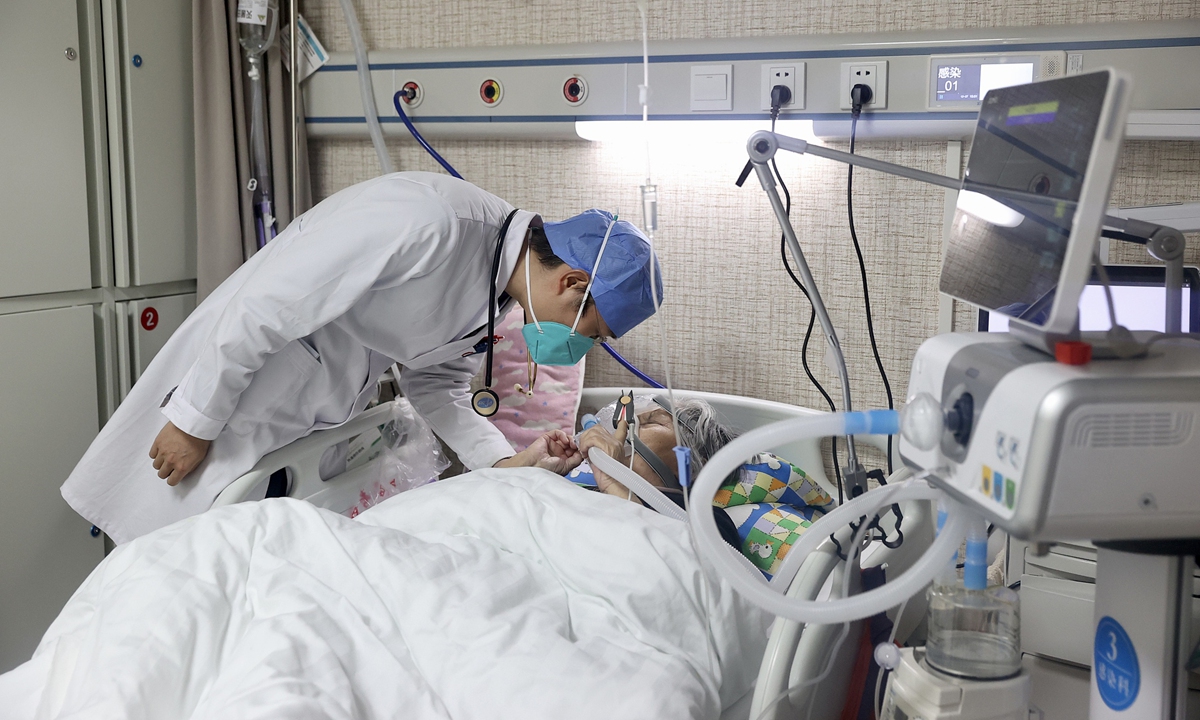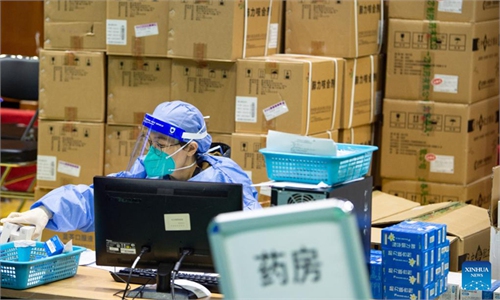Severe cases account for 3-4% of total hospitalized patients in Beijing, lower than early 2020 outbreak level: experts

Photo: CFP
While in recent days hospitals in Beijing have been fully gearing up to battle against COVID infections and adopting various measures in treating severe illness, some prominent doctors and experts said that the overall rate of severe and critical cases is lower than that of the early outbreak in 2020 and that severe cases account for only about 3 percent to 4 percent of total hospitalized cases.
Tong Zhaohui, an expert in respiratory critical diseases under the National Health Commission, said that some COVID patients who visited the hospitals had a common form of pneumonia, but a very small number presented signs of "white lung" - an indicator of severe illness.
"Whether it's severe pneumonia, hypoxemia or acute respiratory failure, we have relatively mature treatment methods and there are corresponding guidelines and strategies from both domestic and foreign sides," Tong was quoted as saying in media reports on Thursday.
The proportion of patients showing "white lung" symptoms or severe and critically ill account for three to four percent of the current infections, Tong said. The clinical treatment of respiratory failure caused by pneumonia is very effective and as long as the treatment is provided in a timely manner. Doctors can deal with it using oxygen inhalers, ventilators and extracorporeal membrane oxygenation, improving the conditions of a considerable number of patients, the expert noted.
A number of hospitals in Beijing have seen a surge in COVID patients in recent weeks, and hospitals have taken measures to mobilize medical staff and allocate resources to fully guarantee the treatment of critically ill patients.
Zeng Guang, a former chief epidemiologist from the Chinese Center for Disease Control and Prevention, told an online forum that although we still lack accurate statistics, probably over 80 percent of the population in Beijing had been infected with COVID and the percentage could be higher.
Zeng also told the forum that other cities should learn from Beijing's experiences in handling the surge of infections to prioritize the treatment of critical illness and to shift focus from preventing infections to medical treatment. Additionally, Beijing called for infected medical workers and those with mild infection symptoms to continue working and asked medical workers who had retired within the last five years to return to work.
In the past two weeks, visits to emergency department remained at a high level with the number of patients increasing to 450 to 550, Zhang Yuhua, deputy director of the outpatient office of Chaoyang hospital, was quoted as saying in media reports. The number of ambulances daily entering the emergency department is as high as 75 to 90 and the number of patients received is about 100, Zhang said. Hospitalized patients are mainly elderly and critically ill patients with preexisting conditions. The patients are treated in a variety of ways in accordance with the severity of their conditions, according to media reports.
Some doctors who have been on the frontlines of the fight against COVID-19 for the past three years showed confidence in dealing with the surging number of patients hospitalized, as Omicron's virulence is further declining, leading to fewer critical cases and deaths.
"Although we lack the statistics about the overall death rate for now, the rate of the severe cases is much lower than that of the outbreak in Wuhan," Wang Guangfa, a respiratory expert from Peking University First Hospital, told the Global Times in a recent interview.


